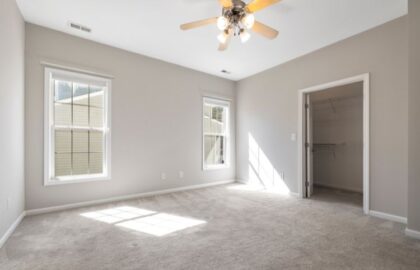
Commercial property management fees are the fees that property owners pay to property management companies to manage their commercial properties. These fees can vary depending on a number of factors
Commercial property management fees are typically calculated based on a percentage of the monthly rent collected. However, there are a few other fee structures that may be used, such as a flat rate fee structure or a hybrid fee structure.
In this article, we’ll explain how commercial property management fees are calculated and discuss all the different fee structures.
Is Managing Commercial Property an Easy Endeavour?
Managing commercial property is not an easy endeavour. It requires a wide range of skills and knowledge, including real estate law, property management, financial management, marketing and leasing, in addition to customer service.
Commercial property managers also need to be able to handle multiple tasks simultaneously and work under pressure. They also need to be able to build and maintain relationships with tenants, vendors, and other professionals in the commercial real estate industry.
Overall, managing commercial property is a challenging but rewarding career. Commercial property managers play a vital role in the economy by helping to manage and maintain commercial properties. They also help to ensure that tenants have a positive experience and that their businesses can thrive.
Here are some of the challenges that commercial property managers face:
- Dealing with difficult tenants
- Keeping up with maintenance and repairs
- Managing finances
- Marketing and leasing vacant space
- Staying up-to-date on laws and regulations
That’s why it’s best that property owners solicit the services of a specialised specialised property manager.
This way, the owners can rest assured that their business is running like clockwork. They can also free up their time for growing the business. The property management cost is then an investment, rather than a liability.
The Factors Affecting Commercial Property Management Fees
It’s worth noting that in addition to the standard factors, there may be other reasons why a commercial property manager might charge more. For example, if the property manager has a lot of experience or a good reputation, they may be able to charge higher fees.
Additionally, if the property manager is providing a specialised service, such as leasing or managing a medical office building, they may also be able to charge higher fees.
Location and Size of the Property
The property’s location can affect the management fee in several ways. For example, properties in desirable locations, such as downtowns or near major highways, will typically have higher management fees. This is because they are in high demand and require more time and resources to manage.
The size of the property can also affect the management fee. Larger properties will typically have higher management fees because they require more time and resources to manage. A property manager might have to work weekends if the need arises.
For example, a large office building will require more time to inspect and maintain than a small retail store.
For more information on inspections, see our post here on how often a landlord can inspect a property.
Condition of the Property
The condition of the property can also affect the management fee. Properties in need of significant repairs or maintenance will typically have higher management fees.
This is because the property manager will need to spend more time and money on upkeep. For example, a property with a leaky roof will require more time and money to maintain than a property with a new roof.
Type of Tenants
The type of tenants can also affect the management fee. Rental properties with a mix of tenants, such as retail and office space, will typically have higher management fees than properties with a single type of tenant.
In such cases, the property manager will need to deal with a wider range of needs and concerns. For example, a retail property may have tenants who need different hours of operation and security needs than an office property.
Level of Services Provided
The level of services provided can also affect the management fee. Management companies that offer a wider range of services, such as accounting, marketing, and leasing, will typically charge higher fees.
It’s understandable since they are providing more value to their clients. For example, a property management company that offers accounting services will be able to save the property owner time and money by handling their accounting needs.
Average Rates in the Area
Management fees will vary depending on the local market. It is important to research the average rates in your area before choosing a management company. This will help you to ensure that you are paying a fair price for the services that you are receiving.
Additional Fees and Costs
In addition to the base management fee, there may be other fees and costs associated with commercial property management, such as:
- Lease-up fee: A fee charged to help find and place new tenants.
- Lease renewal fee: A fee charged to help renew existing leases.
- Maintenance and repair costs: The cost of routine and emergency maintenance and repairs.
- Accounting and bookkeeping fees: The cost of preparing and filing financial statements and tax returns.
- Marketing and advertising costs: The cost of marketing the property to potential tenants.
Typical Commercial Property Management Fee Structures
There are three main types of commercial property management fee structures: percentage, flat rate, and hybrid.
Percentage Fee Structure
The percentage fee structure is the most common type of commercial property management fee structure.
Under this structure, management companies charge a percentage of the total rent collected. The percentage typically ranges from 4% to 12%, but it can be higher or lower depending on the factors listed above.
Flat Rate Fee Structure
The flat rate fee structure is less common than the percentage fee structure. Under this structure, management companies charge a fixed fee regardless of the amount of rent collected. The flat rate fee is typically based on the size and complexity of the property.
Hybrid Fee Structure
The hybrid fee structure combines a percentage of rent with a flat fee. For example, a management company might charge 5% of rent plus a flat fee of $500 per month. This type of fee structure is often used for larger or more complex properties.
The Bottom Line
As a commercial property owner, which management fee structure is right for you?
The best fee structure for you will depend on your specific needs and circumstances. If you have a large or complex property, or if you need a management company to provide a wide range of services, then a percentage fee structure may be the best option for you.
If you have a smaller or less complex property, or if you only need a management company to provide basic services, then a flat rate fee structure may be the best option for you.







